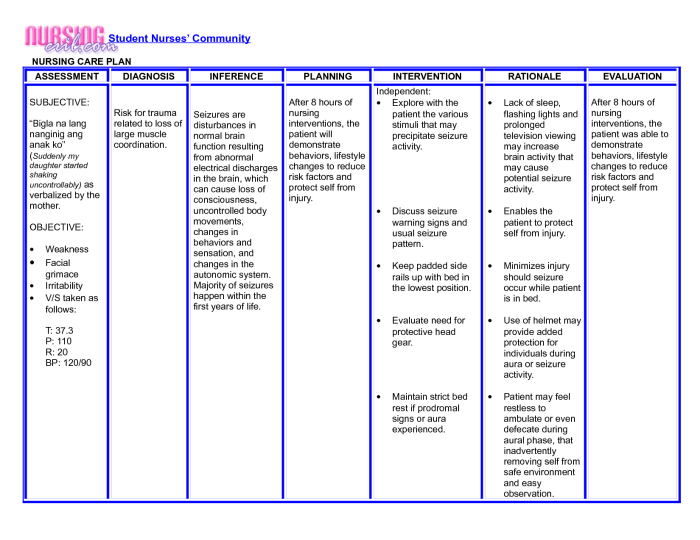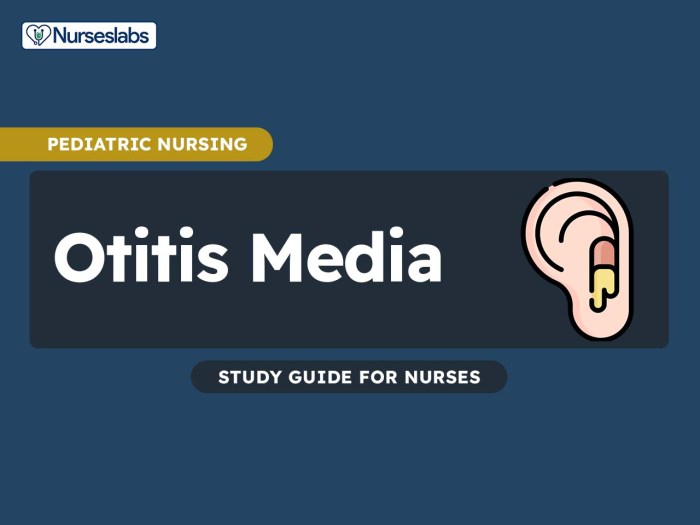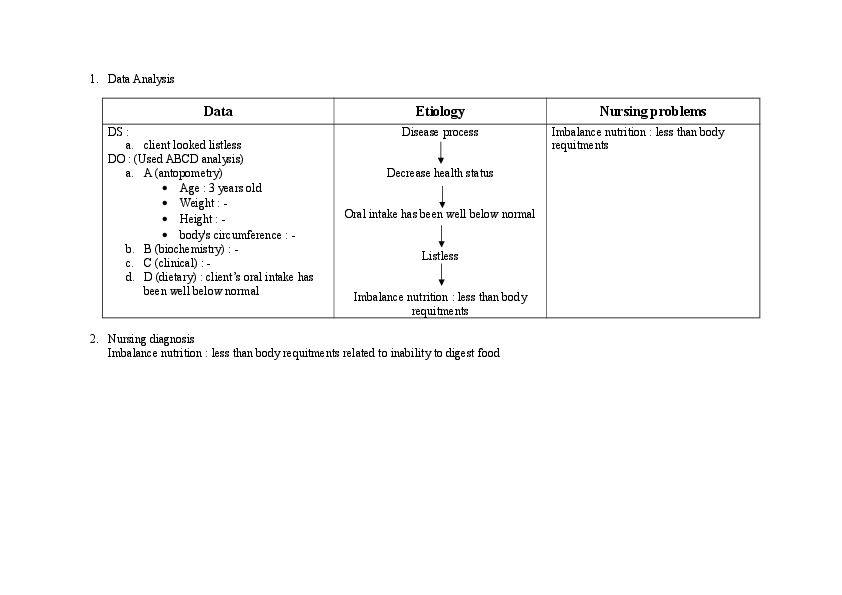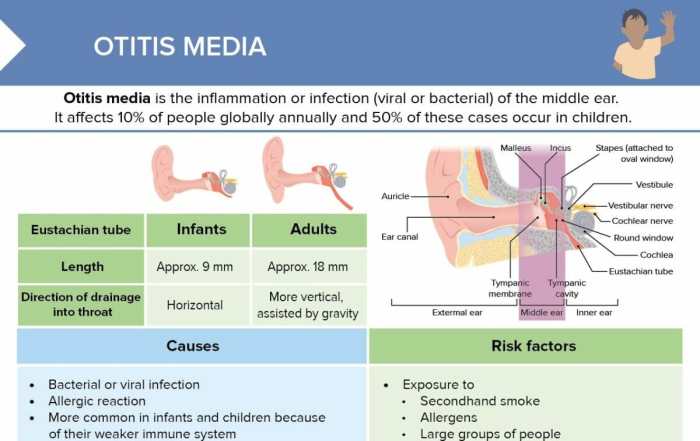Nursing care plan for otitis media is a crucial component of managing this common childhood illness. Otitis media, also known as middle ear infection, affects millions of children each year, and its effective management requires a comprehensive approach that encompasses assessment, diagnosis, treatment, and evaluation.
This plan provides a roadmap for nurses to deliver optimal care, ensuring the well-being of young patients.
The nursing care plan for otitis media Artikels the steps involved in providing holistic care, including physical examination techniques, patient history assessment, identification of potential complications, and organization of a nursing care plan using a structured table format. Specific nursing interventions are detailed for each nursing diagnosis, emphasizing patient education and discharge planning.
Overview of Otitis Media

Otitis media is an infection of the middle ear, which is the air-filled space behind the eardrum. It can be acute or chronic, and it is most commonly seen in children.
Causes and Risk Factors
Otitis media is usually caused by bacteria or viruses that enter the middle ear through the Eustachian tube, which connects the middle ear to the back of the throat. Risk factors for otitis media include:
- Age (children under 2 years old are at highest risk)
- Exposure to tobacco smoke
- Frequent colds or allergies
- Cleft palate or other structural abnormalities of the Eustachian tube
- Attendance at daycare or preschool
Signs and Symptoms
The signs and symptoms of otitis media can vary depending on the severity of the infection. Common symptoms include:
- Ear pain
- Fever
- Irritability
- Difficulty sleeping
- Hearing loss
- Discharge from the ear
Nursing Assessment for Otitis Media

The nursing assessment for otitis media includes a physical examination and a patient history.
Physical Examination Techniques
The physical examination should include an examination of the ears, nose, and throat. The nurse should look for signs of infection, such as redness, swelling, or discharge. The nurse should also check the tympanic membrane for any abnormalities, such as perforation or bulging.
Importance of Patient History
The patient history is important for identifying risk factors for otitis media and for determining the severity of the infection. The nurse should ask about the patient’s age, exposure to tobacco smoke, frequency of colds or allergies, and any structural abnormalities of the Eustachian tube.
Potential Complications
Otitis media can lead to a number of complications, including:
- Hearing loss
- Mastoiditis (infection of the mastoid bone behind the ear)
- Meningitis (infection of the meninges, the membranes that cover the brain and spinal cord)
- Brain abscess
Nursing Care Plan for Otitis Media

The nursing care plan for otitis media should be individualized to the patient’s needs. The plan should include interventions to address the patient’s symptoms, prevent complications, and promote healing.
| Assessment | Nursing Diagnosis | Outcomes | Interventions | Evaluation |
|---|---|---|---|---|
| Ear pain | Acute pain related to inflammation of the middle ear | The patient will report a decrease in ear pain. |
|
The patient reports a decrease in ear pain. |
| Fever | Hyperthermia related to infection | The patient’s temperature will return to normal. |
|
The patient’s temperature returns to normal. |
| Irritability | Anxiety related to pain and discomfort | The patient will appear calm and relaxed. |
|
The patient appears calm and relaxed. |
| Difficulty sleeping | Sleep deprivation related to pain and discomfort | The patient will get a good night’s sleep. |
|
The patient gets a good night’s sleep. |
Medications for Otitis Media: Nursing Care Plan For Otitis Media

The medications used to treat otitis media include antibiotics, pain relievers, and antipyretics.
Antibiotics
Antibiotics are used to kill the bacteria that cause otitis media. Common antibiotics used to treat otitis media include amoxicillin, penicillin, and erythromycin.
Pain Relievers, Nursing care plan for otitis media
Pain relievers are used to reduce the pain associated with otitis media. Common pain relievers used to treat otitis media include acetaminophen and ibuprofen.
Antipyretics
Antipyretics are used to reduce fever associated with otitis media. Common antipyretics used to treat otitis media include acetaminophen and ibuprofen.
Helpful Answers
What are the common signs and symptoms of otitis media?
Symptoms may include ear pain, fever, irritability, difficulty sleeping, and hearing loss.
How is otitis media diagnosed?
Diagnosis involves a physical examination of the ear, including otoscopy, and may include additional tests such as tympanometry or audiometry.
What are the potential complications of otitis media?
Complications can include hearing loss, mastoiditis, meningitis, and facial nerve paralysis.